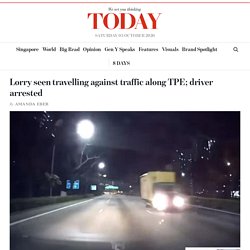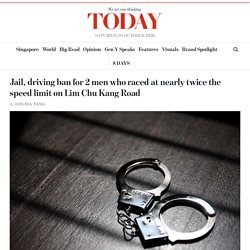

What is operant conditioning? Distinguishing operant and classical conditioning by the order of stimulus. Distinguishing operant and classical conditioning by behaviour. B.F. Skinner Operant Conditioning (Full video) Reinforcement: Action to promote good behaviour - Positive vs Negative. Punishment: Action to discourage bad behaviour - Positive vs Negative.
Skinner’s Operant Conditioning: Rewards & Punishments. Schedules of reinforcement. Effectiveness of schedules of reinforcement (Graph) Operant Conditioning (B.F. Skinner) Examples and Research - Practical Psychology. If you're on this page, you're probably doing some research on B.F.

Skinner and his work on Operant Conditioning and wanting to learn more. Throughout our lives, we are conditioned to behave in certain ways. Our brains naturally gravitate toward the things that bring us pleasure and back away from things that bring us pain. When we connect our behaviors to pleasure and pain, we become conditioned. When people are subjected to reinforcements (pleasure) and punishments (pain,) they are undergoing operant conditioning. Operant conditioning is a system of learning that happens by changing external variables called 'punishments' and 'rewards'. Based on how the pigeons understood the consequences of their actions, and changes to their behavior, Skinner developed the idea of operant conditioning. We can unearth the definition of operant conditioning by breaking it down. Here’s a quick example. In operant conditioning, you can change two variables to achieve two goals. Reinforcement to incentivise drivers to drive safely.
Forum: LED lighting safer, more energy-efficient, Forum News. We thank Mr Ng Yee Cheng for his feedback (LED white lights make driving at night a hazard, Sept 26). As technology improves, there are opportunities for us to adopt more environmentally friendly and cost-effective technologies. Light-emitting diode (LED) street lights are one such example. LED street lights have been adopted in many countries. They provide top-down directional lighting that helps to disperse light rays uniformly on the roads. This minimises the scattering of light rays beyond unintended areas, making it safer for road users. They also reproduce the colours of objects more accurately compared with conventional high pressure sodium lighting, enabling road users to see better at night. These provisions help to improve road safety for all. The Land Transport Authority's (LTA) LED street lights comply with international standards of illumination, which carry strict requirements on permissible glare levels.
Road Safety Month begins as Singapore reopens, Singapore News. SINGAPORE - The eighth Singapore Road Safety Month was launched on Tuesday (June 2), with traffic expected to increase as Singapore enters the first day of its post-circuit breaker reopening. Posters and banners will be fixed on trains, bus shelters and lamp posts during the month-long campaign to remind pedestrians to "ensure that all vehicles have come to a stop before crossing", and motorists to "slow down when approaching traffic lights". Winners of a road safety art competition in March will also have their works printed on ez-link cards for distribution. Although primarily focused on the heartland and areas near schools, banners will also be displayed - for the first time - in residential estates in Bukit Timah, the police and the Singapore Road Safety Council said. The campaign is jointly organised by the two, together with the Land Transport Authority (LTA), Ministry of Education, People's Association and the Automobile Association of Singapore.
Forum: Various initiatives in place to encourage safe driving, Forum News. We thank Mr Nam Lee Seng for his suggestions to incentivise motorists to drive safely (Surprising note from Traffic Police, Sept 3). We do quite a bit of that. For instance, motorists who maintain a demerit-point-free record for three consecutive years will be eligible for a certificate of merit. This entitles them to an offence-free discount of 5 per cent on vehicle insurance premiums from participating insurance companies, over and above their no-claim discount. And to deter motorists from dangerous driving, the penalties for irresponsible driving offences were increased last year. For example, mandatory minimum imprisonment sentences will be imposed for egregious, irresponsible driving offences, such as causing death or grievous hurt while driving under the influence of alcohol.
How a Certificate of Merit can help reduce your car insurance premiums - DirectAsia Insurance. Punishment for compromising road safety. Lorry seen travelling against traffic along TPE; driver arrested. SINGAPORE — A 28-year-old man believed to have driven a lorry against the flow of traffic along the Tampines Expressway (TPE) has been arrested, the police said in a news release on Sunday (April 12).

The traffic police received several calls about the incident, which occurred on Thursday night at around 11.40pm. No injuries were reported. Several videos showing a lorry going against the flow of traffic were posted online. In some of the videos, the lorry is seen with its headlights turned off. In others, the lorry flashes its headlights repeatedly at oncoming cars while travelling along the expressway. After investigating using images from CCTV cameras, the traffic police were able to identify the driver. The man’s driving licence was immediately suspended, the police added, and investigations are ongoing. Jail, driving ban for 2 men who raced at nearly twice the speed limit on Lim Chu Kang Road. SINGAPORE — When the traffic police responded to a tip-off about an illegal car race on Lim Chu Kang Road, they found about 40 parked cars there, with spectators standing nearby.

An officer then saw Goh Tze Ming and Khairulanwar Ismail speed past him in their Volkswagen GTIs. Goh was driving at 132km/h, while the other man clocked 136km/h — both reaching almost twice the speed limit of 70km/h. The two men claimed trial to charges of participating in an illegal racing competition in the wee hours of Dec 9, 2016. On Tuesday (Sept 10), District Judge Carol Ling rejected their defences and found them guilty of the offence. She sentenced each man to five weeks’ jail, a fine of S$1,500, and a three-year driving ban. They will begin serving their jail time on Sept 19. When Goh, 37, was arrested, he told Sergeant Vincent Nai that he was rushing off to the toilet after leaving his friends.
Sergeant Nai testified that he chased the pair and clocked Goh at 132km/h. Traffic Offences in Singapore: Demerit Points & Composition Fines (2020 Update) (Photo Credit: Singapore Police Force) Updated: 25 August 2020 Here is the full list of traffic offences that carry demerit points and composition fines in Singapore.

Known as the Driver Improvement Points System (DIPS), it was implemented by the Traffic Police in 1983. Under DIPS, any driver who accumulates 24 demerit points within 24 months will be suspended from driving. If a driver has been previously suspended, he can only accumulate up to 12 demerit points within 12 months before he is liable for another suspension. For new or probationary drivers, they can only amass 13 demerit points within 12 months.